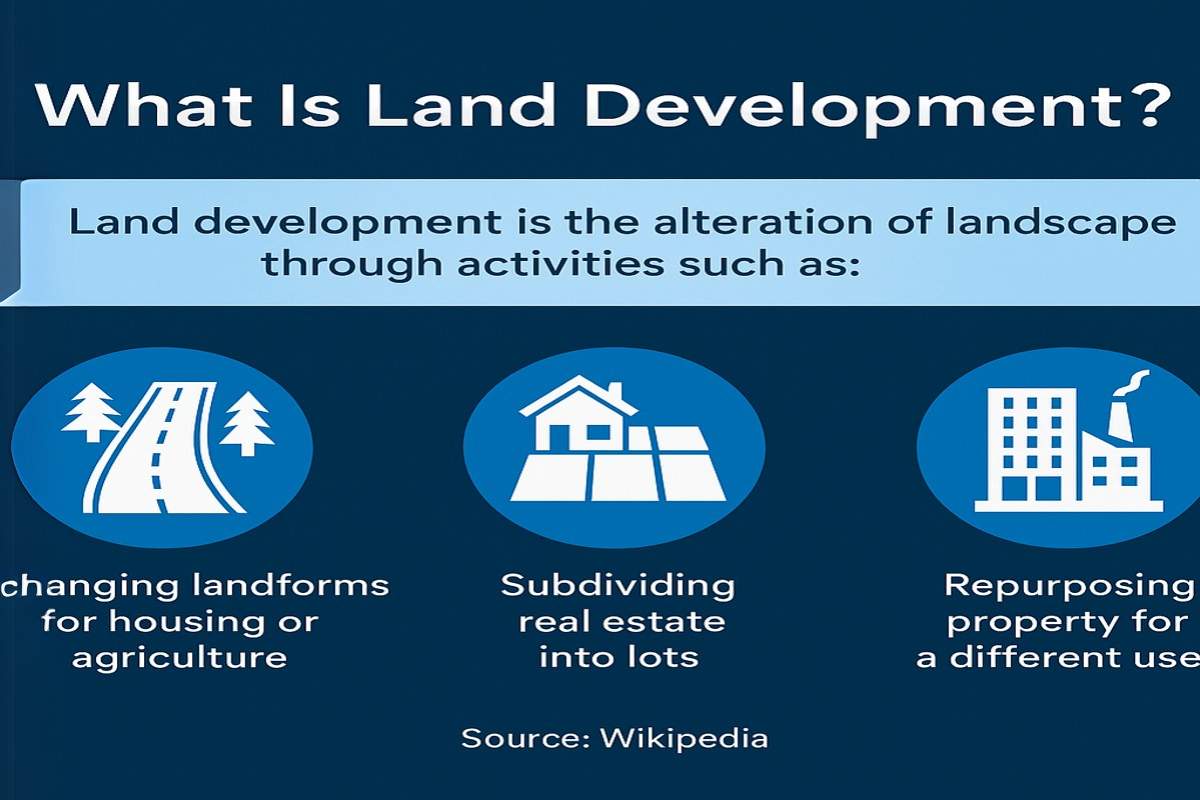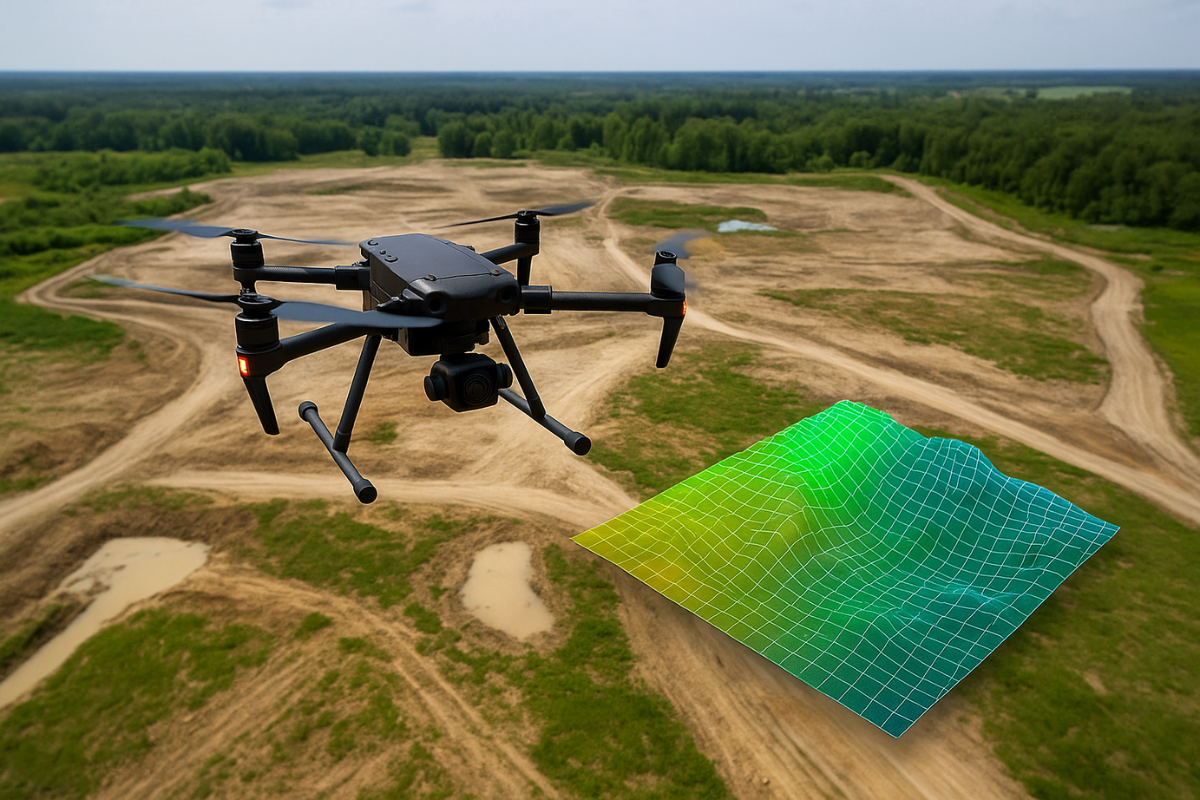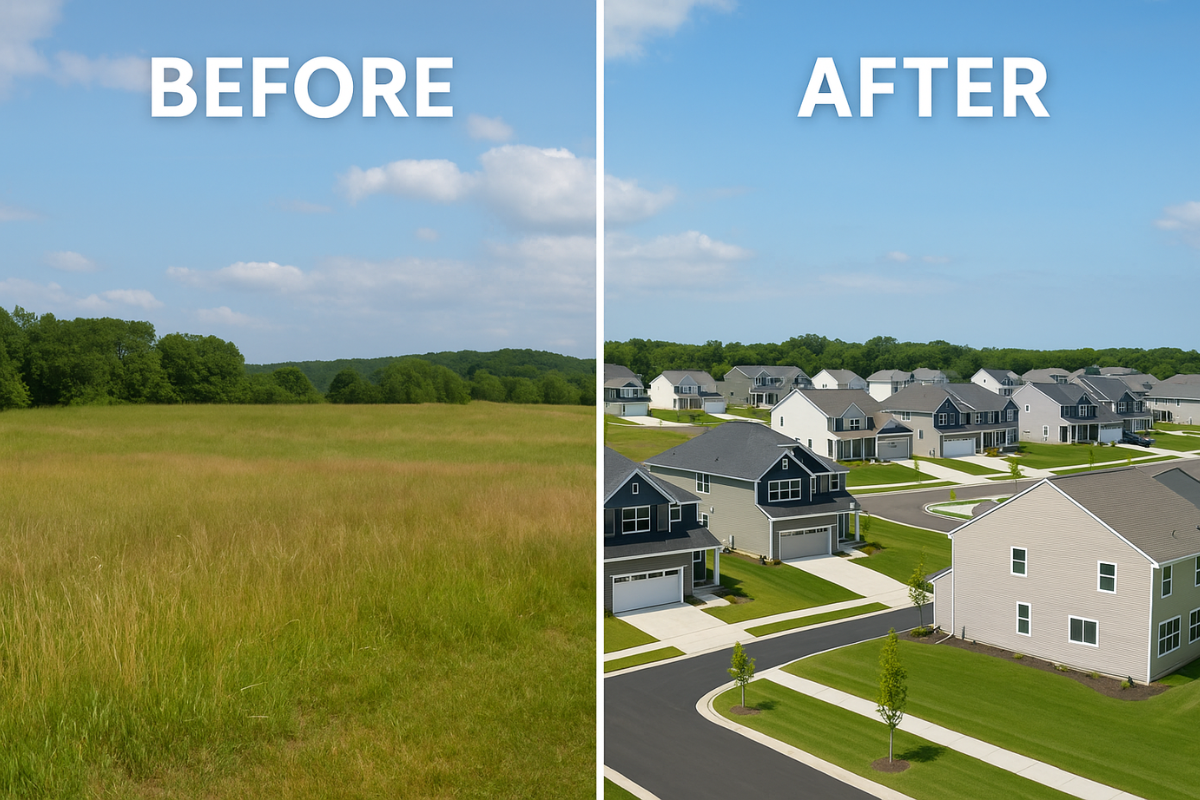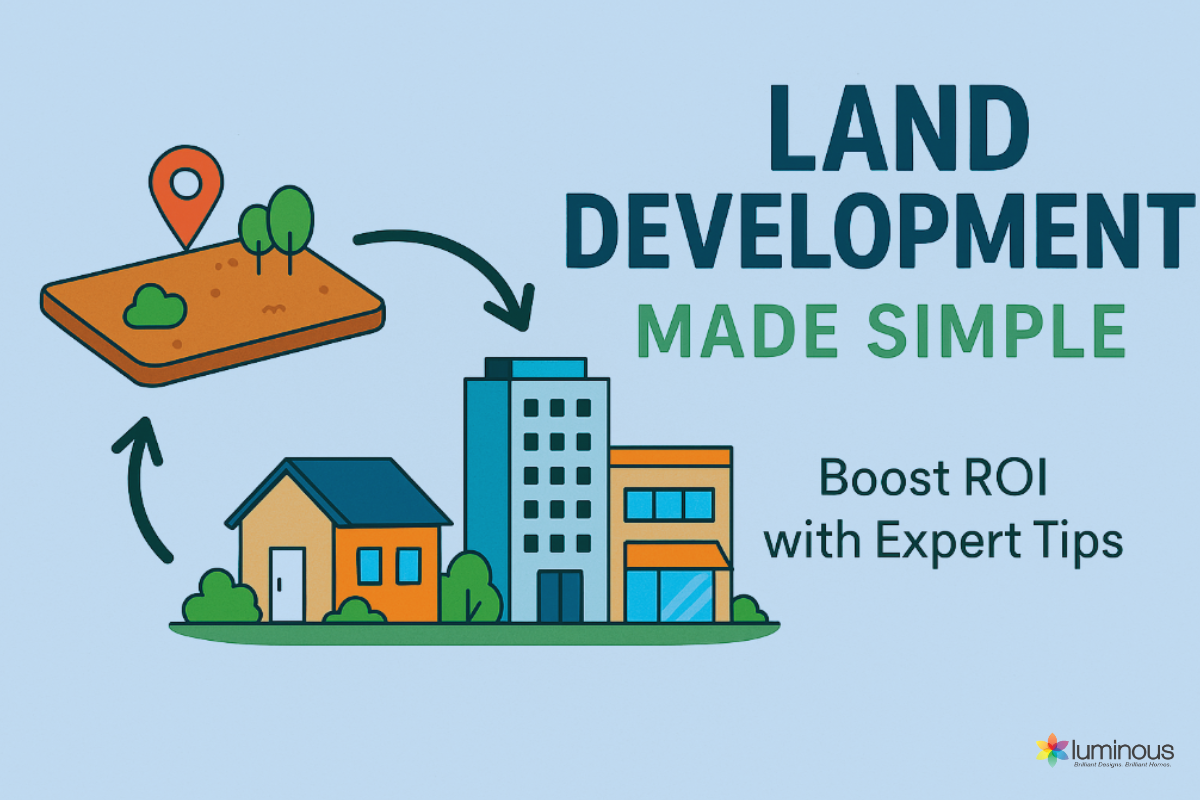In today’s dynamic real estate landscape, land development is no longer just a buzzword — it’s a transformative process that can unlock substantial value from underutilized land.
But where do you begin? This guide walks you through the essentials of modern land development — from selecting the right land development agency to maximizing your ROI with smart strategies, all with insights from the experts at Luminous Homes.
1. What Is Land Development and Why Does It Matter?
According to Wikipedia, land development is the alteration of landscape in any number of ways such as:
- Changing landforms from a natural or semi-natural state for a purpose such as agriculture or housing
- Subdividing real estate into lots, typically for the purpose of building homes
- Real estate development or changing its purpose, for example by converting an unused factory complex into a condominium.

According to IBISWorld, the U.S. land development industry has grown steadily at 0.9% annually from 2019–2024 and is expected to increase by another 1.0% in 2025. That shows just how essential this industry is to meet the demand for new spaces and growing populations.
2. Key Steps in the Land Development Process
2.1. Understand Your Land Before You Develop It
Before doing any design or construction, the first thing you should do is get to know the land. Is the ground flat or sloped? Are there trees, a creek, or a hill that might affect what you build?
Take a walk around the land. Sometimes, just by being on-site, you’ll notice special features that could become beautiful highlights later—a small pond, a high point with a great view, or a shady grove of trees that could turn into a peaceful park space.
If you’re working with a professional land development agency, they can help you analyze the land better and find the smartest way to use it.
2.2. Think About the People First, Not the Roads
A common mistake in land development is planning roads and infrastructure first, then squeezing in buildings. Instead, think about the people who will live, work, or shop there.
How will they move through the space? Where will they park, gather, or relax?
Design for the human experience first — then build the roads around that vision.
2.3. Optimize Space in Every Land Development Project
Sometimes plans look nice on paper but waste a lot of space in real life. For example:
- Too many intersections or streets that aren’t needed
- Big empty areas that don’t serve a purpose
- Setbacks (the distance between a building and the street) that are too large
Smart land development means making every square foot count—to increase buildable area, create more green space, and reduce construction costs.
2.4. Build the Right Land Development Team
No land project is done by one person alone. You’ll need designers, engineers, contractors, city officials, and maybe even investors.
Choosing the right land development agency will save you time, cost, and headaches. Make sure everyone knows their role and communicates often.

2.5. Let Technology Help You
Modern land development services now include drone surveying, 3D mapping, and community-focused planning tools.

Drones can give you a full view of your land. According to flyguys.com, using drones for land surveys helps reduce time, cut costs, and improve safety compared to traditional methods.
3D mapping tools help you plan better. Virtual designs show what the project will look like when finished.
This doesn’t just make the process easier—it also helps future buyers or tenants see the vision early, so they get excited before it’s even built.
2.6. Turn Problems Into Features
Every piece of land has limitations, but smart developers turn those into strengths.
- Got a flood-prone area? Turn it into a water feature or rain garden.
- Have a weird slope? Maybe it becomes a playground on a hill.
- Trees in the way? Keep them and build around them—people love nature.
Land development should work with the land, not against it.
2.7. Stay Flexible and Watch the Market
Things change. Prices go up. Trends shift. What buyers want today might not be what they want next year.
So be ready to adjust. Maybe build homes with no stairs for older buyers. Or include dog parks and shared spaces because families with pets are looking for that.
Always ask: what do people want now, and how can my land give it to them?
2.8. Land Development Is Simpler Than You Think—If You Plan It Right
Land development doesn’t have to be complicated. It just takes the right mindset, the right people, and a solid plan. Whether you’re starting with a small lot or a big open space, the goal is the same: turn unused land into something that brings value—to you, and to the community.
3. Need Help with Land Development?
We’ve heard the phrase “you used me for land development” from landowners who felt taken advantage of by the wrong partners. At Luminous Homes, we’re committed to honest, collaborative development that benefits everyone involved.
If you own land in Houston, Texas, and you’re not sure what to do with it—Luminous Homes can help.

At Luminous Homes, we offer end-to-end land development services tailored to your needs—from concept to completion. Whether you’re exploring development land for sale or starting with your own property, we’re here to help you unlock its full potential.
👉 Schedule your free land development consultation with Luminous Homes today.
Contact us for a free consultation:
Website: luminoushomes.us
Fanpage: Luminous Development Group
Address: 3000 Wilcrest Drive Ste 101
Mail: info@luminoushomes.us
Phone: + 1 832-888-5595

